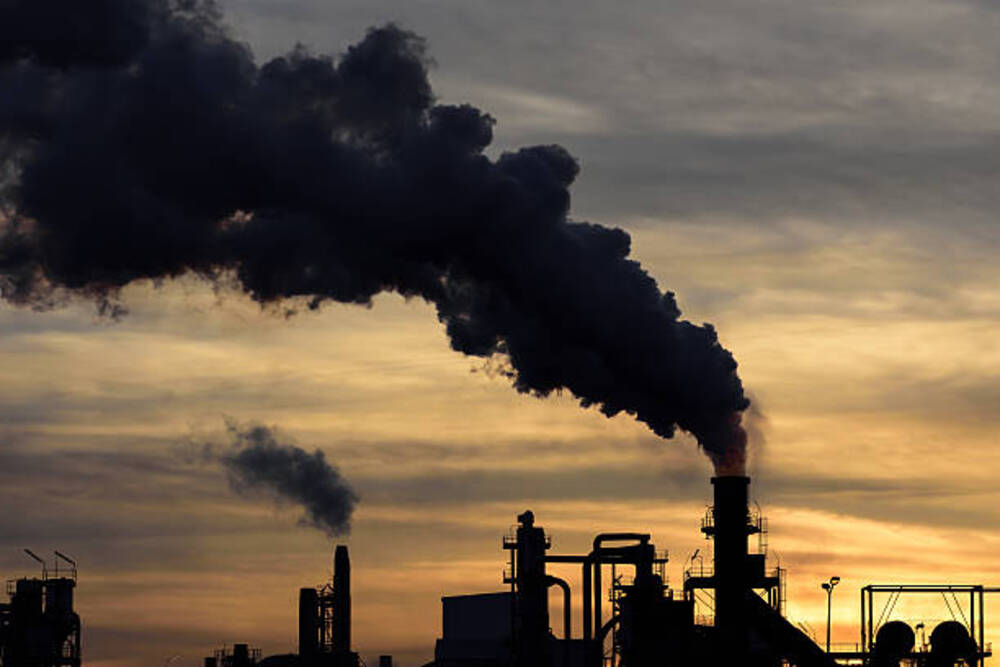The polluters are in shock. The cost of permits on the carbon market in the European Union reached 100 euros ($106.57) a ton today. This happens for the first time, marking a significant development that reflects the higher costs that factories and power plants now incur when they pollute.
The primary unit of account in the European Union’s (EU) Emissions Trading System (ETS), which makes businesses like manufacturing, utilities, and airlines pay for each ton of carbon dioxide they release in an effort to help the EU reach its climate goals, is the EUA. The EUA (EU Allowance) maximum today was traded as high as 101.25 euros per ton.
Yes, there are incentives, that is why polluters must pay
The greater the incentive to invest in low-carbon technologies and switch to cleaner fuels, the more emitters must pay for EU carbon permits to cover each ton of CO2 they produce.
Late last year, EU nations and legislators reached an agreement on changes to the EU carbon market, sparking an optimistic sentiment that has intensified in recent weeks as businesses get closer to an April deadline for purchasing and submitting enough CO2 permits to replace last year’s emissions.
Traders added that the demand for licenses from fossil fuel power generators surged in recent days due to anticipation of cooler weather and low wind speeds, as well as speculation-driven price increases.
The power industry is among the top polluters
The price increase also coincides with a rise in the demand for CO2 permits from the power industry in 2022, when declining Russian gas supplies fueled a 7% increase in EU coal power generation—the most CO2-intensive fossil fuel—despite the high price of CO2.
Although EU policymakers claim it is a short-term solution, the return of coal has caused concerns about Europe’s climate ambitions. However, they also claim that the high cost of fossil fuels, including coal and gas, will ultimately hasten the transition to renewable energy.
Nevertheless, the EU is experiencing political unrest due to rising carbon costs, and discussions about pricing are sure to flare up again now when they surpass the 100 euro threshold.
Poland The Polluter accused speculators of driving up CO2 prices
Poland, which generates the majority of its electricity from coal, has accused speculators of driving up CO2 prices and asked the EU to step in to prevent further price increases. In order to combat rising inflation, Spanish Prime Minister Pedro Sanchez asked for a CO2 pricing cap last year.
Other EU nations see a strong carbon price as being essential to achieving climate goals. A strong carbon market “sends the appropriate signals” to investors and industry about the need to hasten the transition away from fossil fuels, according to a diplomat from one EU nation who spoke on the condition of anonymity.
ETS: From zero to… OMG
The EU ETS was introduced in 2005, and by 2007, when the market was severely oversupplied due to the global financial crisis, the price had practically fallen to zero.
Years of decline were followed by a recovery in CO2 pricing in 2018 as the EU decided to remove excess permits from the market.
Prices increased by 150% in 2021 after EU authorities announced their most recent CO2-reduction regulations.
By forcing utilities to convert from coal to gas, which produces roughly half as much CO2 when burned, to avoid paying a higher carbon fee, that rise helped to reduce emissions, even though last year’s skyrocketing gas prices briefly made coal power more affordable.
Is the threshold of 100 euros going to speed up renewables?
It has long been suggested that a price of 100 euros could encourage the development of some of the pricy technologies thought to be essential to preventing further global warming.
According to Mark Lewis, head of climate research at Andurand Capital Management, investments in hydrogen produced from renewable energy—rather than the traditional production technique of utilizing gas—could become economically feasible if CO2 prices remained over 100 euros per tonne.
The passing of symbolic 100 euros per ton is a serious breaking point. But it doesn’t mean it will last long. People will begin to recognize that the EU is in a new paradigm.
As the EU provides incentives to green industries, these technologies might also benefit from new state aid or investment. This would prevent businesses from moving to take advantage of U.S. subsidies available to enterprises that develop these technologies in North America.
One industry turning to green hydrogen is the iron and steel industry, which is struggling to produce steel that is carbon neutral.
In order to make foreign companies pay the same CO2 price as the European industry, Brussels proposes to gradually phase out the free CO2 licenses that sectors like steel and cement presently receive. In their stead, there will be a groundbreaking carbon border fee on the emissions of imported goods.
The word of experts
Globally, the price of carbon varies widely, with Chinese system permits presently costing less than $10.
As the European Union on Tuesday decided to auction more carbon permits to help collect 20 billion euros to help countries wean themselves off Russian gas, analysts predicted that the European carbon price could drop from the 100 euro level.
Marcus Ferdinand, head of analysis at Oslo-based environmental market consultancy Greenfact, observed that traders appear to ignore the short-term effects of new supply entering the market in favor of the medium- to long-term outlook.
By making modifications to the auction schedules public, he anticipates a correction.

